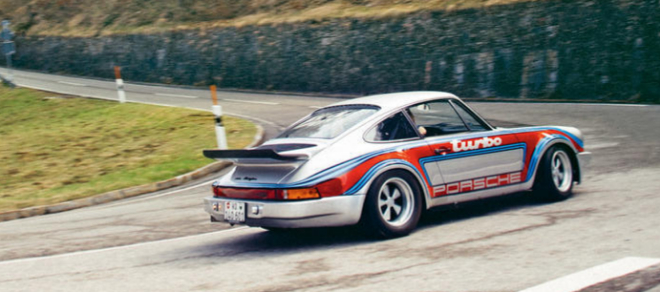- Test - Behind the wheel of the new Porsche 911 Turbo S
- First contact: We drove the Taycan, the first electric from Porsche
There is a 911 that Porsche had no plans to build but agreed to make only one unit. Not all 'porschistas' have heard of him. It is located in Switzerland, kept with all the care that such a special piece needs and with hardly any rolling since it was bought in 2004 by its sixth owner.
Although the model was named 911 Turbo RS, instead of this name what is read on the silver fiber of the engine hood, just below the 'whale tail' spoiler, is Von Karajan. Herbert Von Karajan was the most famous conductor of the 20th century: a mix between a great musician, a person of exhausting perfectionism (as recognized by those who worked with him), a businessman, a marketing guru and, already at the end of his life, stylish old man.
It also generated his dose of controversy because in 1933 he joined the Nazi party , but that is another story and in any case Hitler despised him because one day he had a good time: in 1939, when the Führer entertained the Yugoslav kings with a concert Karajan, who had a habit of not looking at the score, got lost and the orchestra had to stop. Hitler's tantrum was huge .
But let's talk about his excessive fondness for cars . Von Karajan became a celebrity soon enough, and he was often seduced by everything Porsche brought out. He had a 356 Speedster (today they are not found for less than 300,000 euros), a 550 A Spyder (its value is around five million), several 911 and two 959 (of which his wife, when he found out what they cost, he commented : "You should try to sell more records").
With this baggage, and aided by all the attention aroused by whatever he did or said, Von Karajan petitioned Porsche in 1974 : He wanted a Turbo, but it had to be much lighter and sportier than the model that had just released the Stuttgart brand. Its demands included reducing the weight to less than 1,000 kg and having a specific power of less than 4 kg per CV .
It was not easy with that first 911 Turbo, which weighed 1,140 kg and delivered 260 HP (which meant almost 4.4 kg per CV). But Ernst Fuhrmann , then president of the brand, took the commission perhaps as a challenge, perhaps as an opportunity to gain extra publicity, and he set to work to make the musician's dream come true.
For this they started from a chassis of the RSR racing model , which they equipped with the aesthetic elements of the Carrera RS, equipped with a safety arc by suppressing the rear seats, they put a lighter camshaft, a larger turbo (the car gave so about 360 CV ) and lightened everything they could inside. In this regard, even the heavy interior door handles had to be replaced by thin leather straps .
The car remembered for its 'muscle' the 2.8 RSRs that 'flew' in the Mille Miglia , but its sportiness had to be more evident and it took a fancy to wearing the Martini colors of the 911 RSR Turbo 2.1 that had been seen that year at Le Mans. In our opinion it was a mistake and they make the final work lose its good taste, but this whim was not negotiable either and Porsche even had to ask permission from the company Rossi (manufacturer of the famous vermouth) to let him use his colors in that car only.
Perhaps you wonder why so much whim, and you will not lack reason to do so. Here and there, members of his orchestra or neighbors remember how he always left it in the same parking space of the Friesacher hotel (in Anif, Austria), where he often used to stop along the way after rehearsals to eat a veal dish. Or how he occasionally used the car to go up to the Rossfeld station in the Alps.
Those who lived far away could even see something of the car but bought the CD of Famous Overtures, on whose cover the Turbo RS appeared with Karajan at the wheel . But it is a fact that when he sold the car he had only covered 3,000 kilometers, so perhaps the musician himself would one day question whether such a demand had been worth it.
By the way, if you wonder what music Von Karajan listened to when driving his Turbo RS, the answer is none; With no radio due to the requirement to lighten weight, the sound of the boxer motor was the best symphony for your ears.
In accordance with the criteria of The Trust Project
Know more- Engine
Engine At the wheel of the Skoda Octavia Combi: go to another division
Engine Tune up the car facing de-escalation
MotorThe Government promises aid to the purchase of cars such as the Moves II already announced

